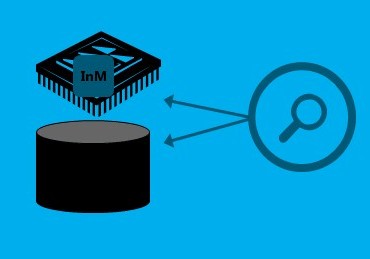GigaSpaces Upgrades In-Memory Platform, Eyes Retail

In-memory computing proponents are citing use examples like online retail shopping to make their case for what they claim is an emerging infrastructure based on in-memory data grids.
Among them is GigaSpaces Technologies, the New York-based middleware vendor that rolled out the latest version of its XAP in-memory computing platform this week. Among the new features are improved memory utilization for large data sets and support for the latest Java programming language, Java 8.
XAP Version 10.1 also comes with an upgraded monitoring capability that uses the InfluxDB open-source database for metrics collection and reporting. GigaSpaces said the new framework, which also used an open source tool called Grafana to build a dashboard front end, enables the collection of long-term storage and analysis of metrics.
The upgraded platform uses memory storage outside Java virtual machines to support large data sets—up to hundreds of terabytes of data on a single server running with one Java virtual machine. The result is less JVM overhead and more in-memory storage per server, the company claimed.
Along with Java 8 support, GigaSpaces said the XAP upgrade also supports the new Java datetime API designed to allow developers to define new java.time properties that can be queried natively via XAP's SQLQuery function.
The platform also supports languages other than Java and .NET by utilizing a RESTful API that allows access from other environments or programming languages in order to access the XAP data grid.
One customer, Magic Software Enterprises, said it is using the XAP 10.1 as a database that is accessible to its applications. As a result, applications built on Magic's platform can handle very large transaction workloads, the partners said.
Citing this and other implementations, GigaSpaces is touting in-memory data grids as a next generation infrastructure capable of storing tens of terabytes of data in RAM along with auxiliary flash memory and solid-state drive storage. By optimizing "data locality," the company asserts in a recent white paper that "applications can process partitions of data in parallel at millisecond speeds."
The company is betting that the retail industry will embrace real-time in-memory computing as online retailers ramp up round-the-clock "omni-channel back-end infrastructure." GigaSpaces is targeting its XAP platform at the retail market as a vehicle for combining the performance and speed of memory and flash storage with commodity development frameworks.
The company said it has already signed up "a handful of top ten retailers" including Kohl's that are currently rolling out online retail infrastructure based on its in-memory computing approach.
Along with its XAP in-memory computing platform, GigaSpaces develops cloud application orchestration software via its Cloudify tool. Among the software vendor's customers are Goldman Sachs, Morgan Stanley, Bank of America, IBM and VMware.
Related
George Leopold has written about science and technology for more than 30 years, focusing on electronics and aerospace technology. He previously served as executive editor of Electronic Engineering Times. Leopold is the author of "Calculated Risk: The Supersonic Life and Times of Gus Grissom" (Purdue University Press, 2016).










